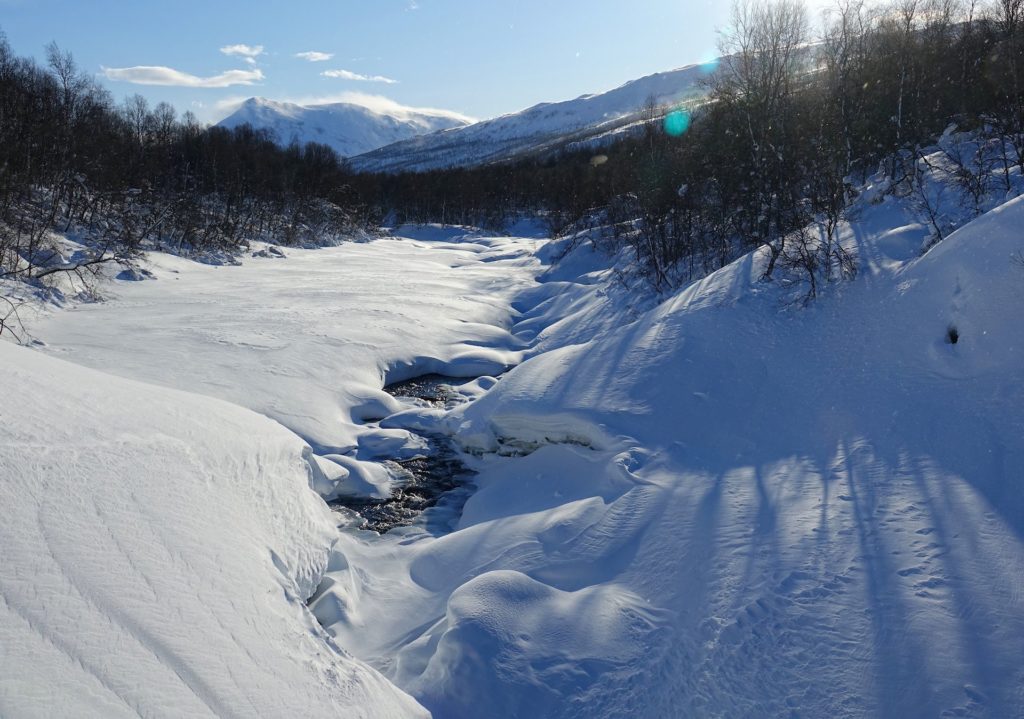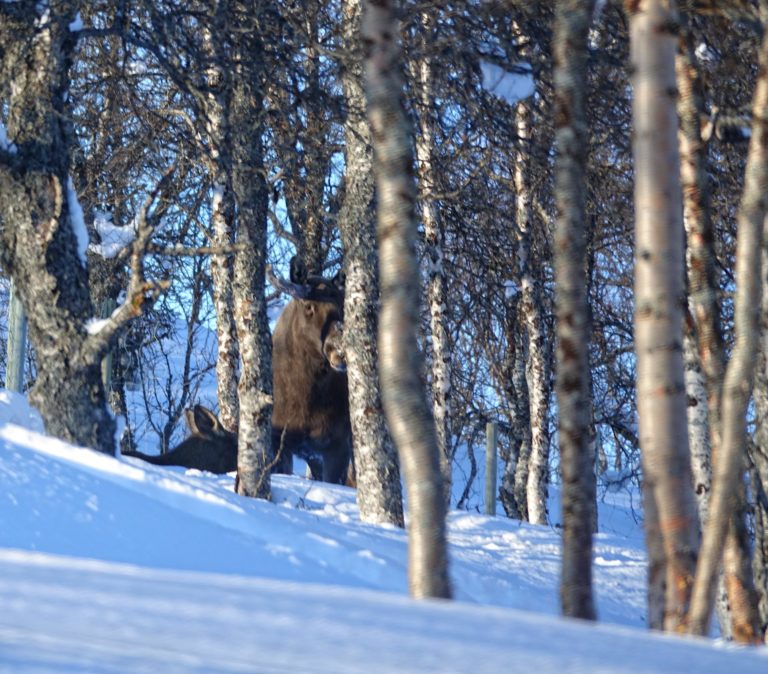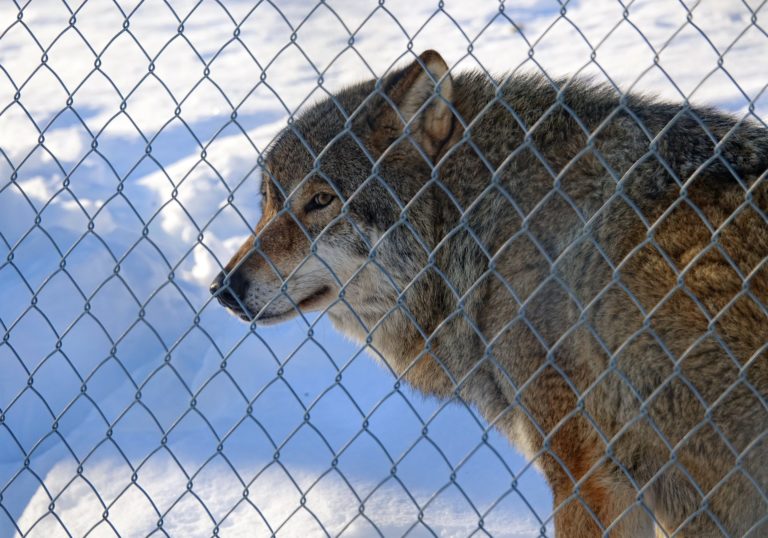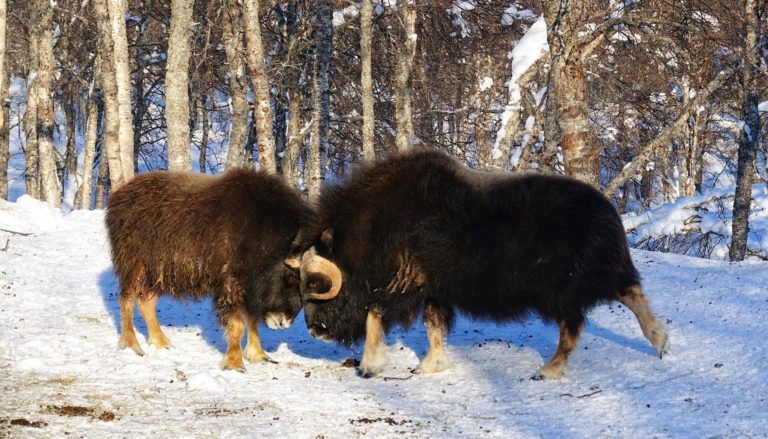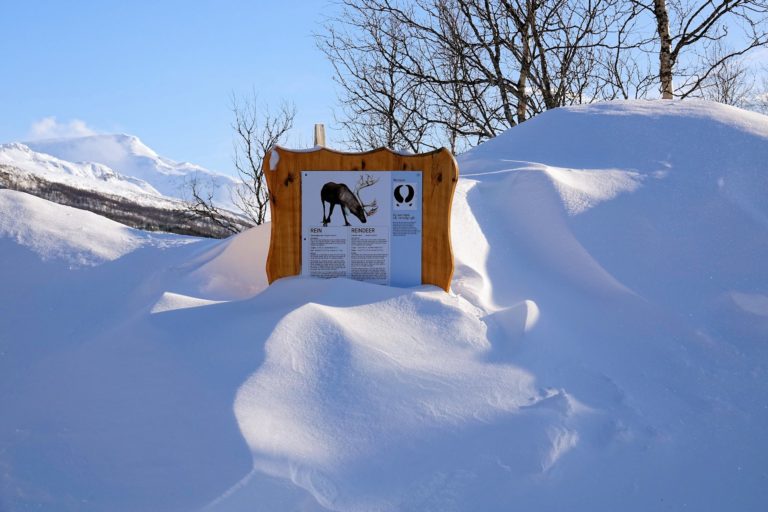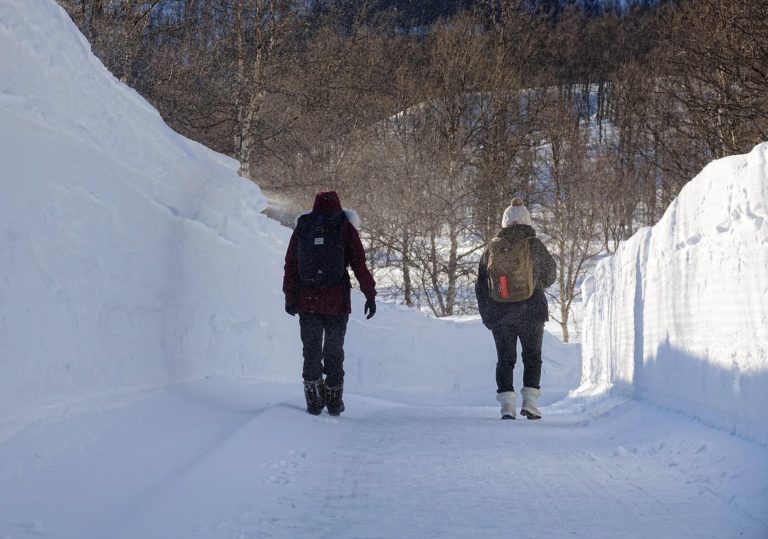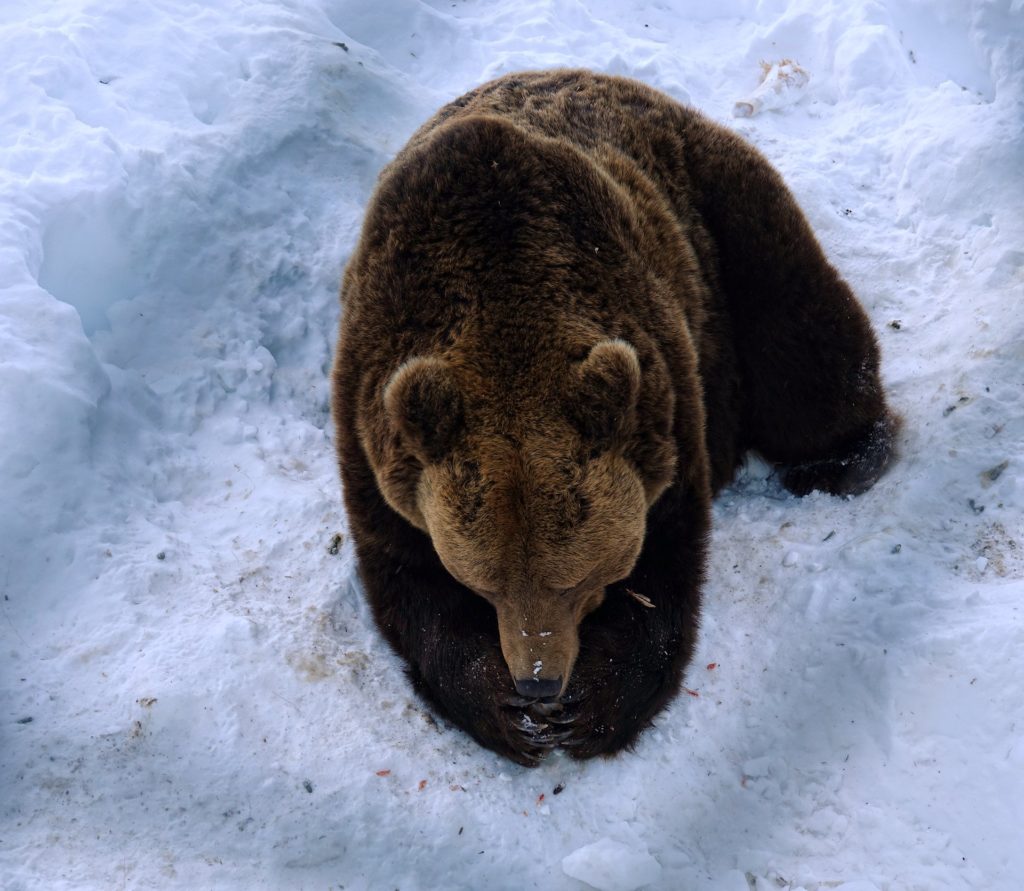Travel a bit around Norway, and you’ll find it impossible to miss the incredible scenery. These pristine landscapes are of course also full of mostly shy wildlife. Go hiking in the right areas, and you may experience some animal encounters. On a road trip, however, you can drive around for weeks and see nothing but domesticated animals.
Polar Park is a great chance to get to know the usually invisible animals of the Arctic a little.
This place was known as Polar Zoo until one bankruptcy ago. It’s now famous for being the world’s northernmost zoo. In my opinion it is fundamentally different from most zoological gardens, so Polar Park is a more fitting name for it anyway.
The enclosures are generously spacious. You may miss the sight of some of the species here entirely, because you can’t even see the whole enclosure from the fences you have to stay behind. The number of different species is also very low compared to a typical zoo. You can see reindeer, musk ox, wolf, bear, lynx, deer, wolverine and moose, and that’s it. Expect to miss at least a couple of them, especially during winter.
That said, I have visited Polar Park both in the summer and in the winter, and I love the place. The animals seem well cared for, they do not appear stressed like zoo animals often do, and both the enclosures and the surroundings are all natural and gorgeous.
This visit to Polar Park took place in early March 2020, locally pre-Corona, as a convenient detour on my way from the Lofoten islands to the Ice Hotel near Kiruna, Sweden. Leaving the main road, E6, we drive up the valley of Salangsdalen, the road surrounded by nothing but tall walls of snow on both sides. Polar Park remains open year-round, and visiting in the winter gives you a particularly authentic look into the lives of the animals of the north.
The main building at the park entrance has a restaurant, a gift shop and a small exhibition explaining about the animals and how they live in the wild in this cold climate. None of this is what we come for, so we buy our tickets and walk across the bridge above a mostly frozen river, Salangselva.
The first animal we (barely) see is a moose. The king of the forest chooses to stand still between the trees, in relative privacy far inside the enclosure. If we want to get closer to the moose, we must be patient, or lucky. Sooner or later they will approach the fence, but there are other animals we’re more eager to see, so we move on.
The wolves have somehow become the main sight in Polar Park. It’s even possible to stay overnight at the Wolf Lodge, in a cabin located inside the wolf enclosure Through large panorama windows you can watch the wolves go about their daily and nightly life. Sounds great, or what? Well, there’s a catch. Staying there is so expensive that the rates are not even listed on their web site. You just have to get in touch with them and ask nicely.
Unfortunately, someone is actually rich enough to stay at the Wolf Lodge for multiple days when we arrive. And they have paid so much for the privilege that the entire wolf area is closed off for all other visitors. We only get this glimpse of a couple of wolves who for a short time decide to show up near the moose enclosure.
Next up are the musk oxen. They are some kind of incredibly fascinating and aggressive Arctic buffaloes. The Greenland inuits call it “the bearded one”, while they are “ugly bison” to Canadian aboriginals. The species disappeared from Scandinavia 9,000 years ago, but were re-introduced from Greenland to Norway in the 1930s. The hunger games also known as World War II got it hunted to extinction again. Another attempt was made, and the animal now roams some of the coldest and harshest mountains in Norway, at Dovre.
These furry beasts have no trouble surviving the kind of winters that no other large herbivores can. Some of that is thanks to their habit of acting with much aggression towards anyone and anything coming near them. You do not want to encounter them in the wild, as it is likely to end badly for you. Keeping a safety distance of at least 200 meters is required. Enough said.
But they’re beautiful, in their own way. Not ugly bison at all.
If you’re a cat person, the lynx will no doubt be the highlight of your visit to Polar Park. Sometimes you’ll find them just sitting with closed eyes, meditating in the snow, enjoying the coldness. Or you’ll find them patroling their enclosure, throwing the occasional hungry glance at children standing outside the fence.
It’s been snowing more than usual lately, so some of the park trails just aren’t quite there.
To get to the reindeer we have to wade through snow that in places is waist-deep.
We find the enclosure, but it’s difficult to know exactly where to look for the animals. According to the sign, reindeer have knees that make a clicking sound when the animal walks. Supposedly this makes it easier for a herd to stay together when they move around through darkness and blizzard. But we hear nothing.
At last, behind a mountain of snow, we find the herd. They’re just lying around, still exhausted from Christmas. Now they just wait for the snow to melt, so that they can start walking around without too much effort.
It turns out that there’s an easier route to and from the reindeer enclosure than the one we made ourselves. We follow the real trail towards the next enclosure, feeling small between these walls of snow.
The main reason for the deep snow are strong winds. Today it’s not snowing at all, but the wind keeps building tall snowdrifts out of snow that fell earlier in the week.
The weather is both nice and bad at the same time, creating white art.
I have had the pleasure of hiking the mountains surrounding Polar Park before. I’m so glad that I did that during the height of summer, and not on this winter day. These peaks look magnificently hostile.
And this guy looks magnificently cuddly. He’s anything but, though. You can tell he is praying for any stupid tourist to approach the fence.
When we entered the park we were warned that the bears are all in hibernation, so we would not see them. This hungry insomniac didn’t get the message.
This amiable big cat laughs us out of the park.
As a customer, I am just as happy as this lynx. The entrance fee may seem a bit steep, but in a world where we increasingly must learn to pay the real cost of everything, it’s most likely a fair price. Among the many places in the world where you can pay to see animals in captivity, the inmates here may well be those who suffer the least.
I do recommend Polar Park to anyone who stays in the general area for a few days, and also as a refreshing stop if you drive past here on a long road trip. Two hours in the park is enough for most visitors, making it a good place to stretch your legs and regain some road stamina, while you enjoy observing and maybe even interact with animals that are well cared for.
How to visit
Important: As I write this, in mid-March 2020, Polar Park is closed because of the coronavirus situation. Eventually this will pass, and when it does, you can do both yourself and Polar Park a huge favor by visiting!
How to get there
Polar Park is both in the middle of nowhere and in reasonable proximity of many places frequented by tourists. If you visit the Lofoten islands, Vesterålen or Senja, you may find yourself close enough to make it worth the detour. It a three hour drive from Svolvær in Lofoten, a one hour drive north from Narvik, three hours south from Tromsø, and three hours west from Kiruna, across the border in Sweden.
If you don’t have a car, you can visit on a day trip including transportation from or between both Narvik and Tromsø. That’s a lot more expensive, and I personally do not find it worth the cost.
Entrance fees
To enter the park you pay 290 NOK per adult and 190 NOK per human between the age of 3 and 15.
If the wolf is your favorite animal, you may consider investing another 3,000 NOK in a two hour wolf visit. It’s a bargain for the kind of stuff that makes Instagram influencers jump with joy.
